Is the Ibis Ripmo V2 still a trail bike or has it veered into enduro territory? A lot of you will be asking yourselves this question. After its predecessor won the trail bike group test, we wanted the EWS-tested bike to take on the competition in our enduro bike test. Can the Ripmo V2 hold its own?
For an overview of the test fleet head to the group test: The best enduro bike 2021 – 13 models in review

Manufacturer’s website
The new Ibis Ripmo V2 can either be classified as a carbon version of the radical aluminium Ripmo AF, which we reviewed previously, or as an evolution of the well-known Ripmo. Whatever the case, it features the same stylish lines and DW-link suspension as the previous carbon Ripmo. At the rear, the Ripmo V2 offers 147 mm of travel which is paired with a 160 mm travel fork. As before, the latest model rolls on 29″ wheels. In the past, we struggled with rattling cables and brake pads on the Ripmo and, unfortunately, none of this has changed on the Ripmo V2. The cables still aren’t clamped down at the ports and Ibis have taken a minimalist approach to the chainstay protector. It’s a shame and you’d expect more considering the bike’s price. On the other hand, the rest of the finishing quality is good, including the excellent workmanship of the rocker links and the fact that Ibis offer a lifetime guarantee on the bearings.
The components of the Ibis Ripmo V2 in detail
When it comes to the components, Ibis leave the choice up to you. Instead of buying a complete bike, you can piece together your dream build from various options. Our € 8,998 test bike features pretty much everything good and expensive. It comes with FOX Factory suspension consisting of a 36 GRIP2 fork and an X2 shock. The 180 mm REVIVE dropper post is supplied by BikeYoke. Ibis’ wide in-house carbon rims turn on Industry Nine Hydra hubs with an incredibly loud freehub that sounds like you’re being chased by a swarm of angry wasps. The Shimano XT drivetrain and brakes are tried and tested but the loudly rattling pads of the latter are annoying. We weren’t entirely happy with the in-house carbon handlebar either. It has too much back sweep for our taste.
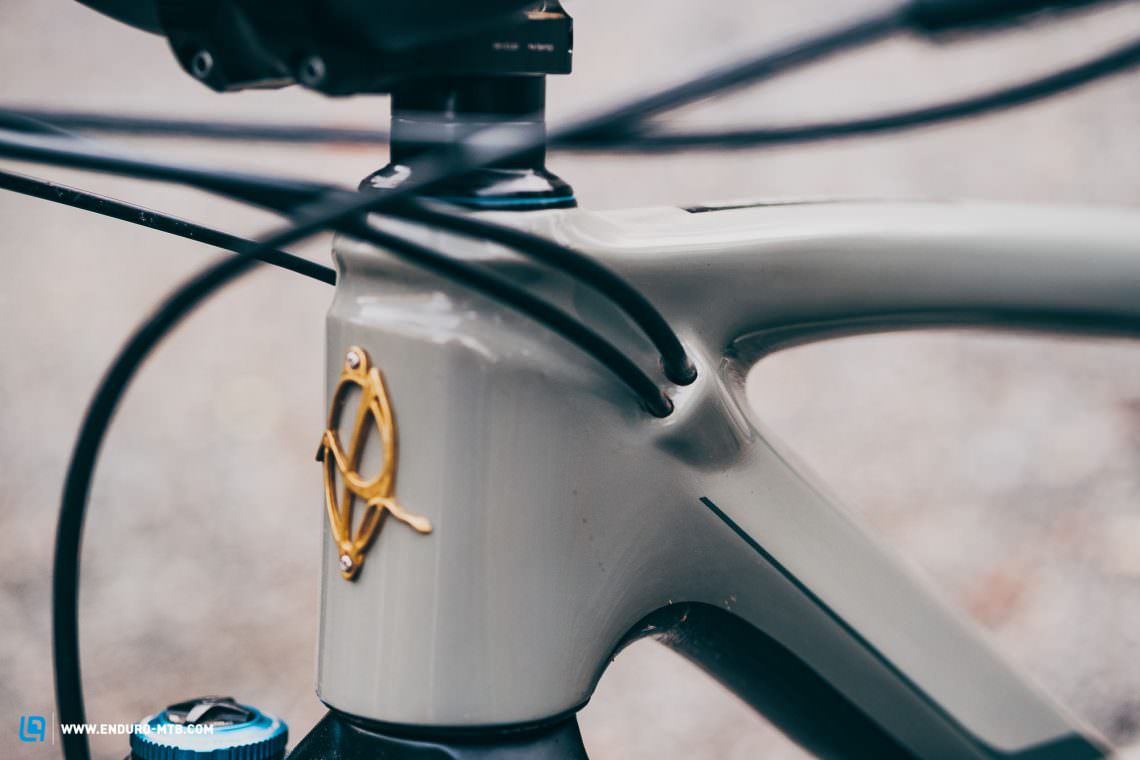
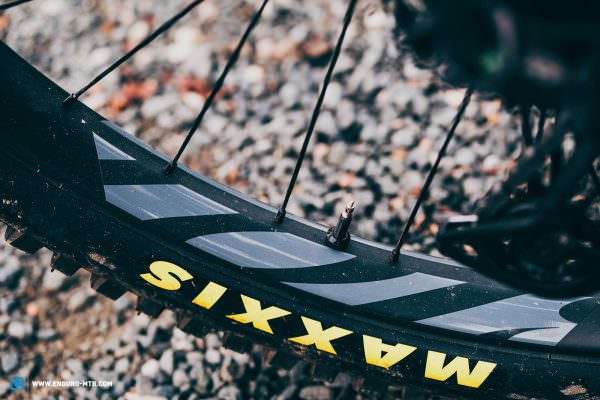
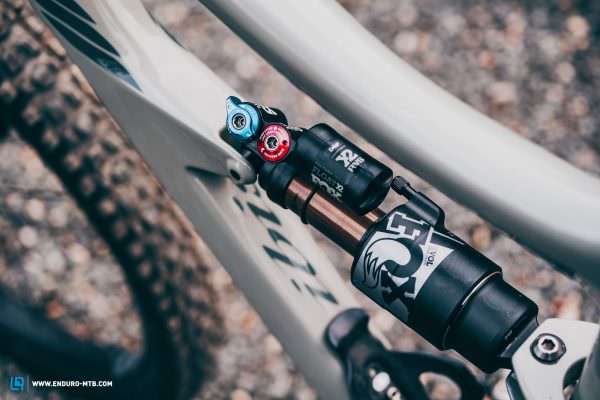
Ibis Ripmo V2
€ 8,285
Specifications
Fork FOX 36 Factory GRIP2 160 mm
Rear Shock FOX FLOAT X2 Factory 147 mm
Seatpost Bike Yoke Revive 180 mm
Brakes Shimano XT 4-piston 203/180 mm
Drivetrain Shimano XT 32/10-51
Stem Thomson Elite X4 50 mm
Handlebar Ibis Carbon 780 mm
Wheelset Ibis S35 Carbon/Industry 9 Hydra
Tires MAXXIS Assegai MaxxTerra EXO+ 2.5"/2.5"
Technical Data
Size S M L XL
Weight 14.04 kg
Wheelsize 29"
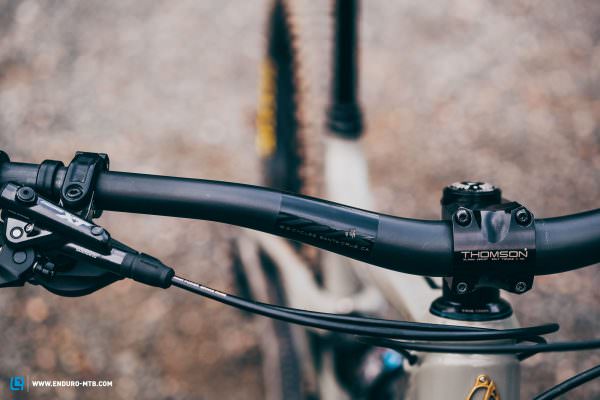

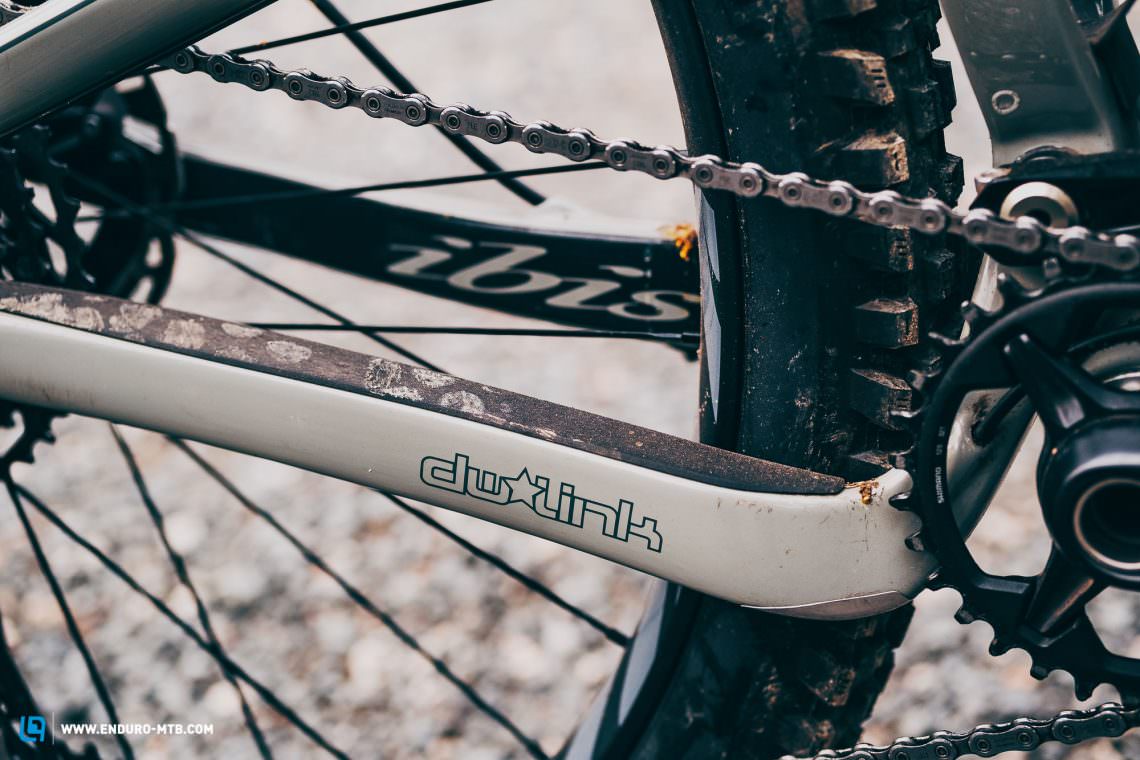
The geometry of the Ripmo V2 – Everything within reason
When it comes to geometry, Ibis have ticked all the right boxes. The Ripmo has a very short 432 mm seat tube while offering enough insertion depth to have the possibility of mounting a long travel dropper post. The 475 mm reach in size L has been well chosen, though the chainstays are rather short at 435 mm. The respective head and seat tube angles of 64.9 ° and 76° are absolutely on point for a modern trail/enduro bike and the bottom bracket height isn’t out of the ordinary either. An ordinary bike, then? Take it out on the trail and you’ll soon realise that’s not the case.
| Size | S | M | L | XL |
|---|---|---|---|---|
| Seat tube | 368 mm | 406 mm | 432 mm | 483 mm |
| Top tube | 573 mm | 603 mm | 632 mm | 655 mm |
| Head tube | 90 mm | 100 mm | 110 mm | 120 mm |
| Head angle | 64.9° | 64.9° | 64.9° | 64.9° |
| Seat angle | 77.0° | 77.0° | 76.0° | 76.0° |
| Chainstays | 435 mm | 435 mm | 435 mm | 435 mm |
| BB Drop | 30 mm | 30 mm | 30 mm | 30 mm |
| Wheelbase | 1,187 mm | 1,219 mm | 1,238 mm | 1,267 mm |
| Reach | 433 mm | 460 mm | 475 mm | 500 mm |
| Stack | 609 mm | 619 mm | 628 mm | 640 mm |
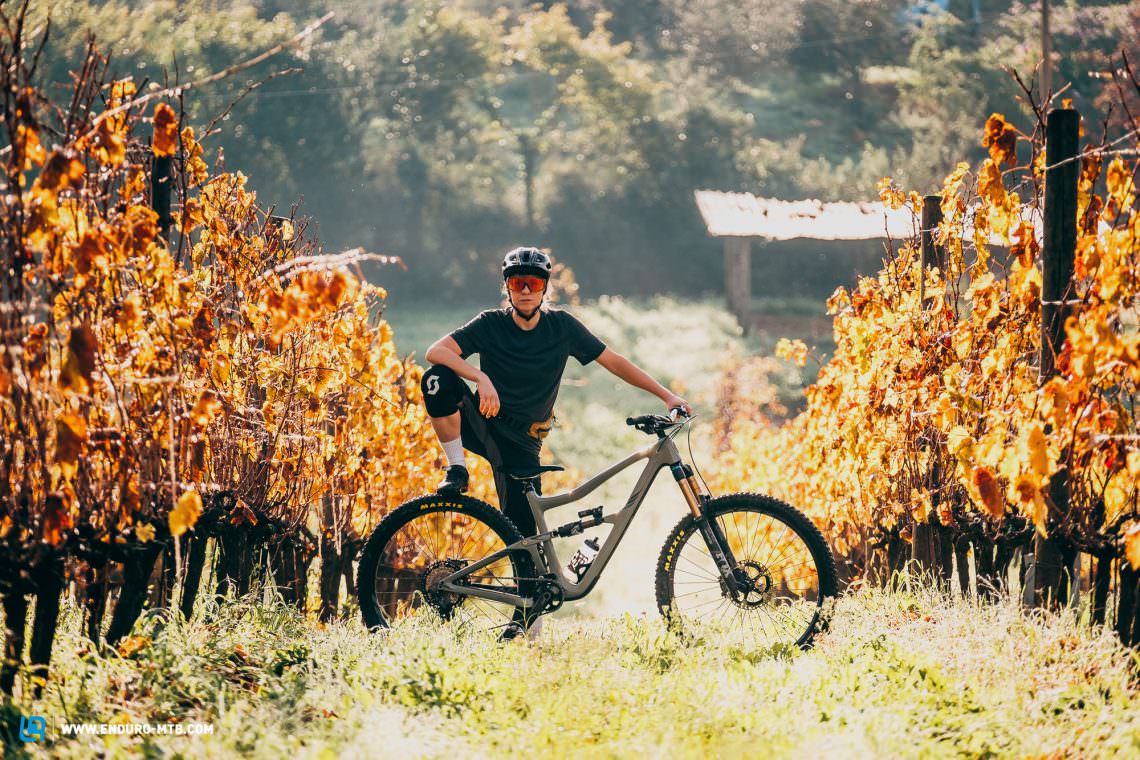
Shorts SCOTT Trail Vertic | Knee pads SCOTT Soldier | Shoes FiveTen Kestrel
It couldn’t be more relaxed – The Ripmo is in a class of its own on the climbs!
Ibis have done everything right here! The Ripmo V2 is in a class of its own on the climbs. The riding position is spot on! Not too compact in flat terrain but still perfectly centred on steep inclines, you won’t want to get off once you’ve swung your leg over it. Thanks to the efficient chassis, lightweight wheels and quick engagement of the freehub, the bike willingly sprints forward, offering a lot of control and responsive handling even when things get technical.
Though you’re positioned centrally on the bike when riding downhill, you don’t feel as integrated between the wheels as you do on the best bikes in the test. Despite the moderate reach and reasonably slack head angle, the front wheel tends to feel unsettled on flat sections and requires an active riding style to keep in control. If you’re not careful, the front wheel will quickly oversteer in open, flat corners.
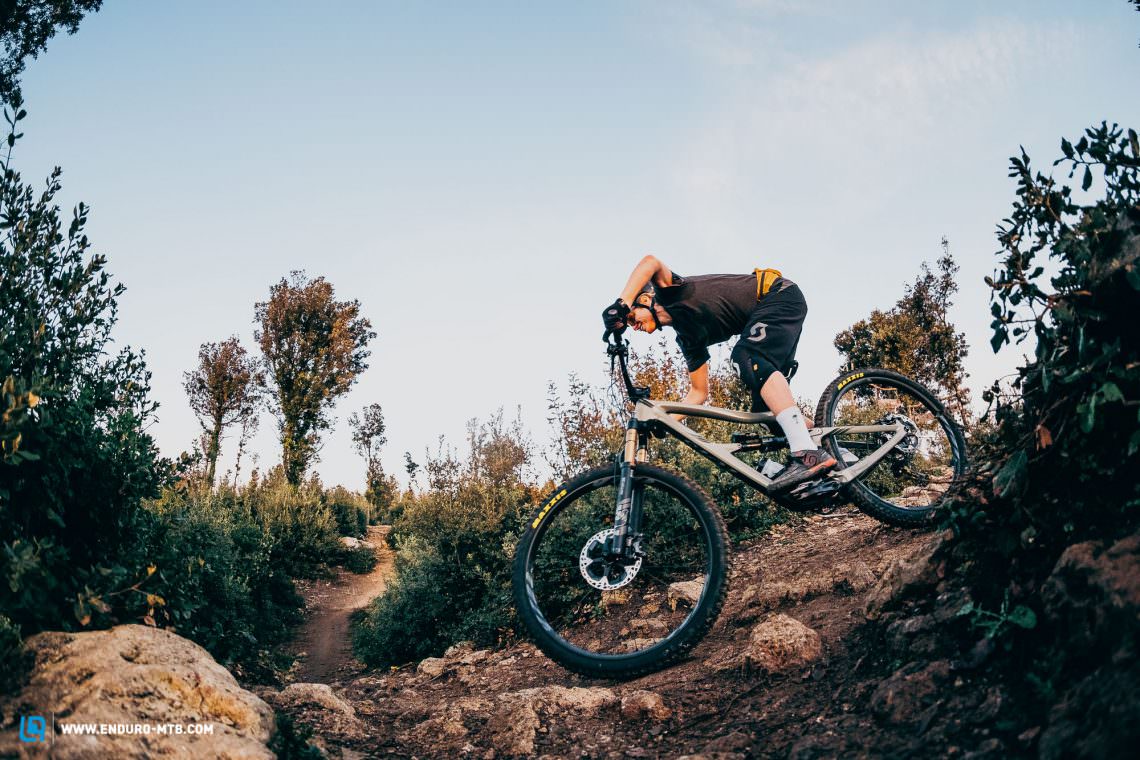
To be fast on the Ripmo, you have to earn it – You get nothing for free here.
You can tell that the Ripmo was designed for steep trails. If you’ve got enough of a gradient, the bike scores with a successful combination of stability and agility, doing a great job of implementing rider input. The bike isn’t demanding but you have to remain vigilant. When things get rough and the trail starts serving up the hits, you’ll soon notice the Ripmo reaching the limits of its 147 mm travel at the rear. It never bottoms out harshly but it runs out of reserves sooner than the best bikes in the test. This could be because the reduced high-speed compression damping of the traction tune, which means that it’s too generous with its travel. Thanks to the fast rebound, the bike delivers a lot of traction over small bumps and still has a lot of pop. Those who like to use every feature on the trail to catch air will be happy about this.
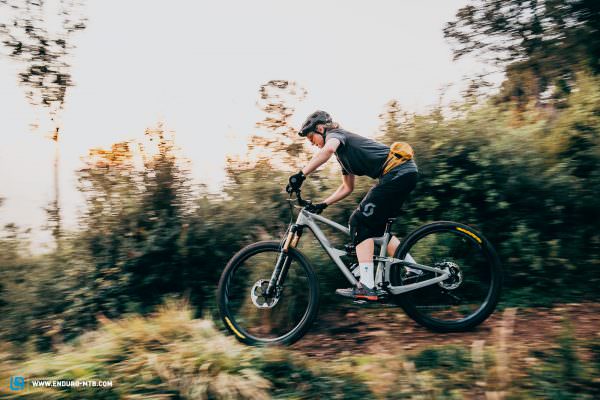

How does the Ibis Ripmo compare to the competition?
Ibis Ripmo or Transition Sentinel? Both bikes are excellent climbers. However, the heavier components on the Sentinel don’t allow for a truly fair comparison. Downhill, the Sentinel is the more agile and also more capable bike. While it demands an even more active riding style through the corners than the Ripmo, it rewards you more too. However, both are more demanding to ride and reach their limits earlier compared to the best bikes in the test, which means that you’ll have to concentrate on the bike instead of the trail.
Tuning tips: clamp the cables at the ports | brake pads without cooling fins | mastic tape on the chainstay | replace handlebar
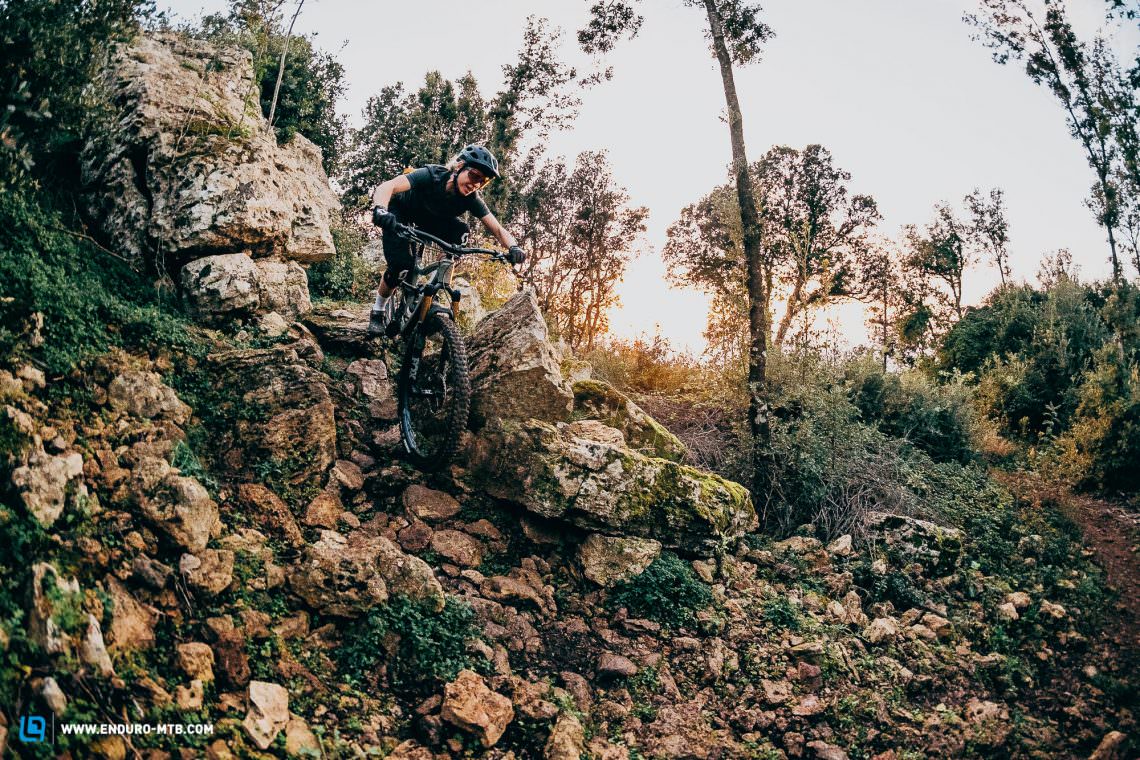
Conclusion
The Ibis Ripmo V2 bridges the gap between trail and enduro bikes. It will get you up any mountain in a super relaxed and efficient manner, no matter how steep, and scores with a good mix of agility and composure on the descents. When things get rough the bike reaches its limits and you have to remain vigilant on flat sections. The rattling is a big annoyance, especially at this price.
Tops
- incredibly good climber
- poppy yet sensitive suspension
- very versatile bike overall
Flops
- unbalanced on flat terrain
- reaches its limits with hard hits
- annoying rattling
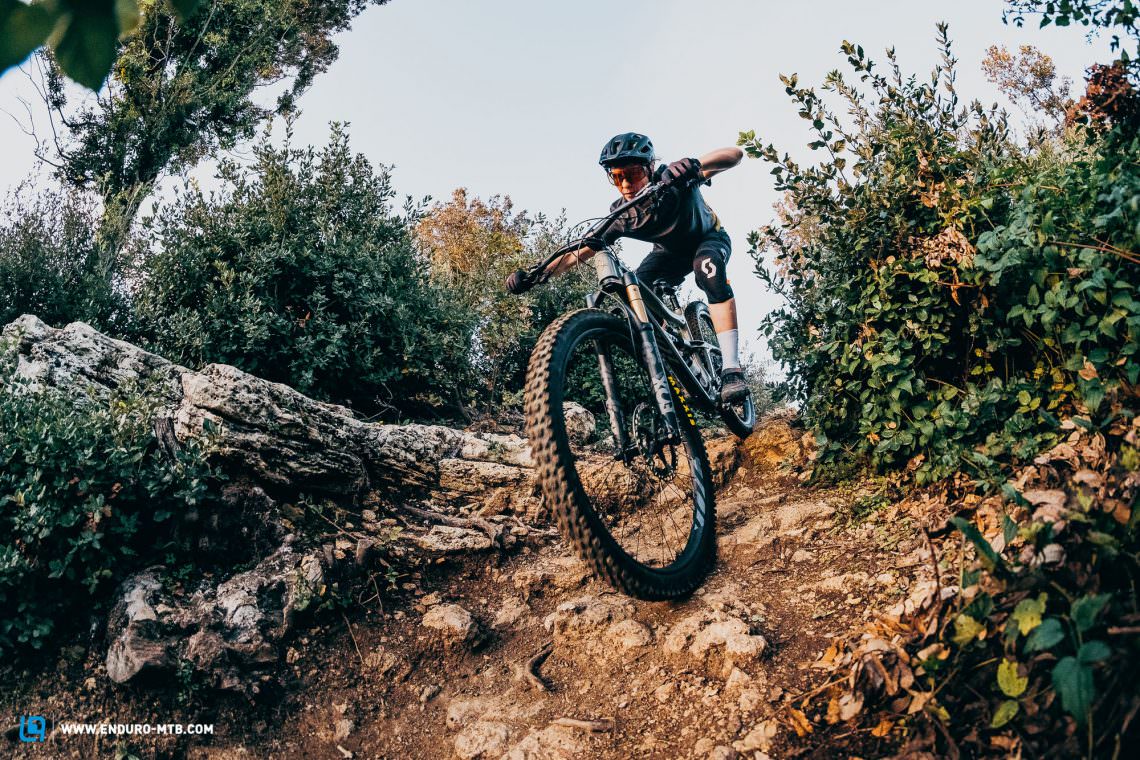
You can find out more about at ibiscycles.com
The test field
For an overview of the test fleet head to the group test: The best enduro bike 2021 – 13 models in review
All bikes in test: Canyon Strive CFR (Click for review) | COMMENCAL Meta AM 29 Öhlins (Click for review) | GIANT Reign Advanced Pro 0 (Click for review) | Ibis Ripmo V2 | Nukeproof Mega 290 Alloy Pro (Click for review) | Propain Spindrift CF Mix Custom (Click for review) | Rocky Mountain Altitude Carbon 90 Rally Edition (Click for review) | Santa Cruz Megatower CC X01 Coil RSV (Click for review) | Santa Cruz Nomad CC X01 RSV (Click for review) | Specialized Enduro Expert (Click for review) | Specialized S-Works Stumpjumper EVO (Click for review) | Transition Sentinel XT (Click for review) | Trek Slash 9.8 XT (Click for review)

Did you enjoy this article? If so, we would be stoked if you decide to support us with a monthly contribution. By becoming a supporter of ENDURO, you will help secure a sustainable future for high-quality mountain bike journalism. Click here to learn more.
Words: Photos: Christoph Bayer, Valentin Rühl, Markus Frühmann









